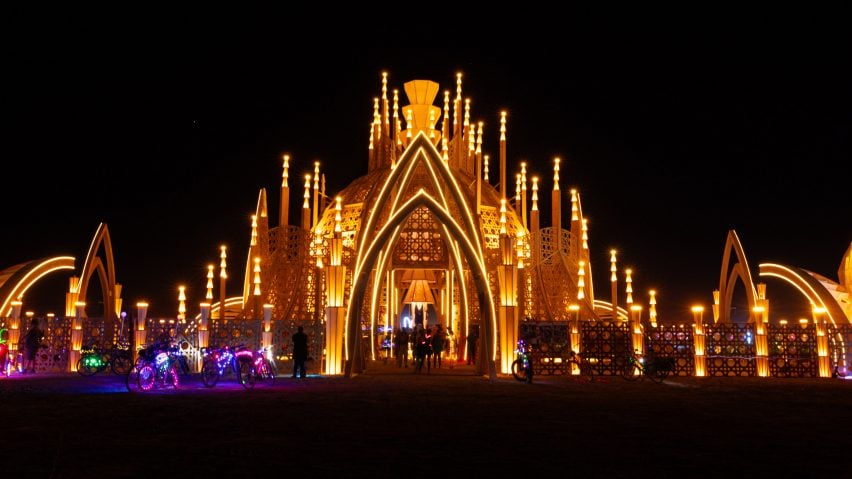
Ten architectural installations from Burning Man 2024
From a canyon-like podium for the man effigy to a solar-powered battery library for artists, here are 10 large-scale installations from this year's Burning Man event in Nevada captured by photographer Gurpreet Chawla.
Teams of artists, designers and volunteers gathered with thousands of visitors for the yearly Burning Man event, constructing inhabitations, art and music infrastructure.
Materials are brought in to construct installations, including the massive temple and effigy.
"Whether during sunrise, daytime, sunset or night; clear skies or dust storms – the playa gives a wonderful range of conditions to see these works of art, and having a camera nearby to capture these moments is a dream for many a photographer," photographer and yearly attendee Gurpreet Chawla told Dezeen.
"These pieces are not just impressive because of superlatives," Chawla said.
"Standing in front of the pieces every year, the ingenuity of the idea takes me and its design, the architectural vision and serious engineering that preceded its journey to playa, and if you can make it to build week – the complex logistics and construction work that goes into making them a reality," he added.
"And all of this to stand stoically in the desert, waiting to be discovered."
The work ranges from the sculptural to the functional, and the materials used vary widely. Some incorporate technology such as massive screens and pyrotechnics, while others are made almost entirely from wood.
Read on to see 10 stand-out architectural installations from Burning Man 2024.
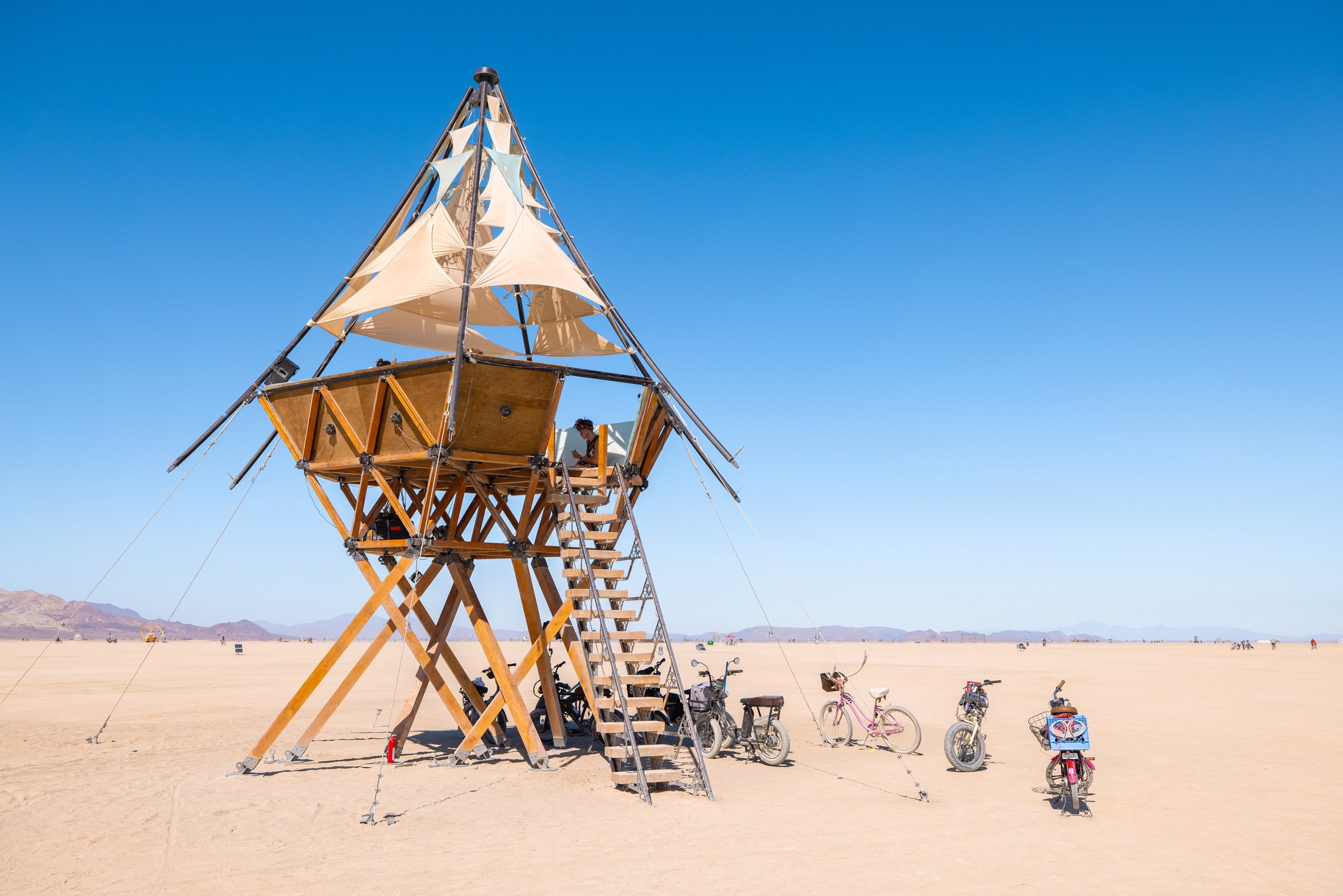
Sonapse by O2 Treehouse, James Lucey, and Jameson Hubbs
Sonapse was a 12-foot-tall (3.5 metres) treehouse in the middle of the desert. It was designed to give views of the desert and surrounding mountains during the day while providing respite and shade.
At night, speakers arrayed around the structure were placed to create "vibroacoustic bass floor soundbaths" and LEDs were placed on the canopy to align with the music.
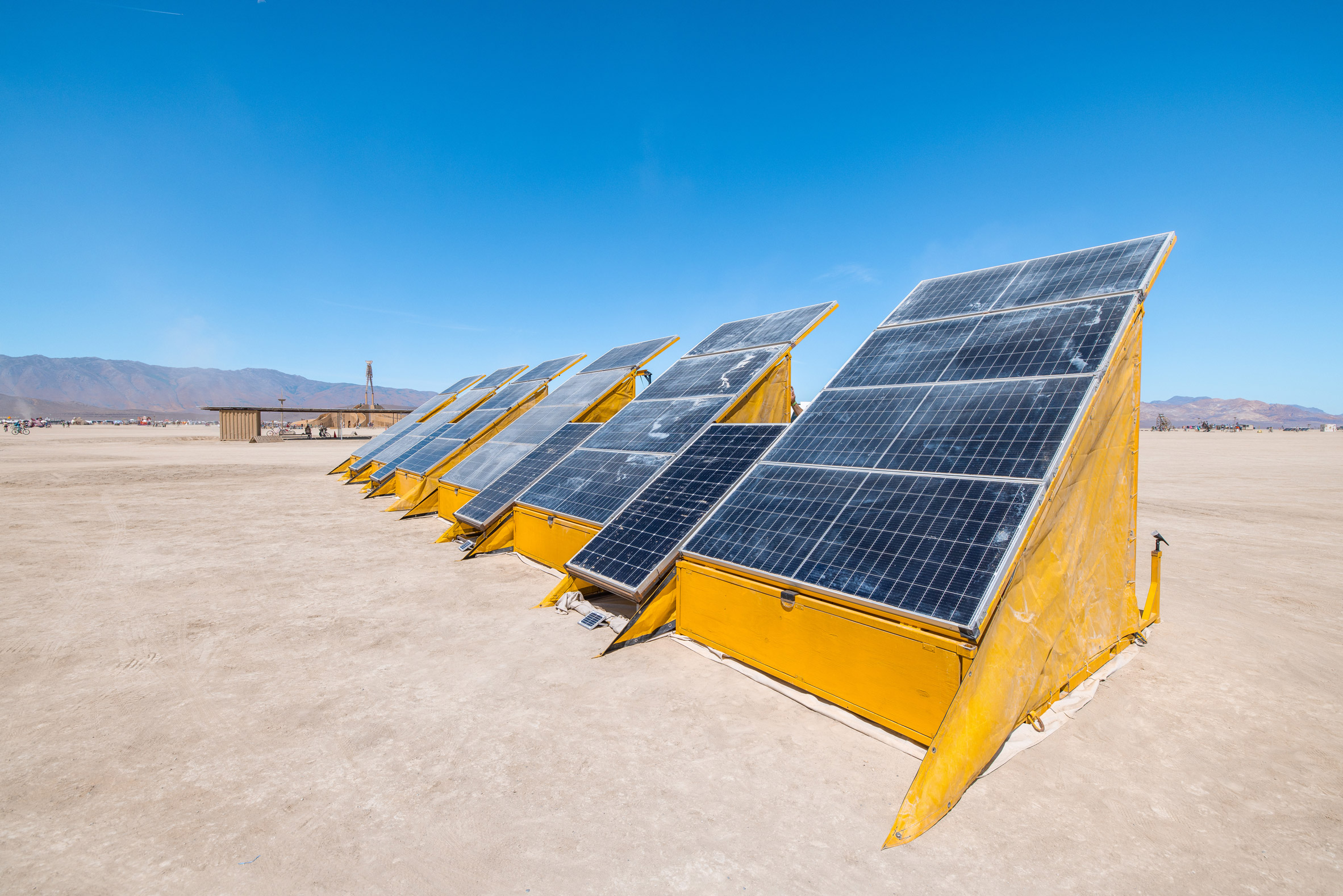
The Solar Library by Joey Ficklin
An Austin, Texas-based team created this "sculptural charging infrastructure" with an array of solar panels on top.
Inside, space was given to artists to charge batteries in order to power their art installation to try and reduce the amount of gasoline generators used during the event.
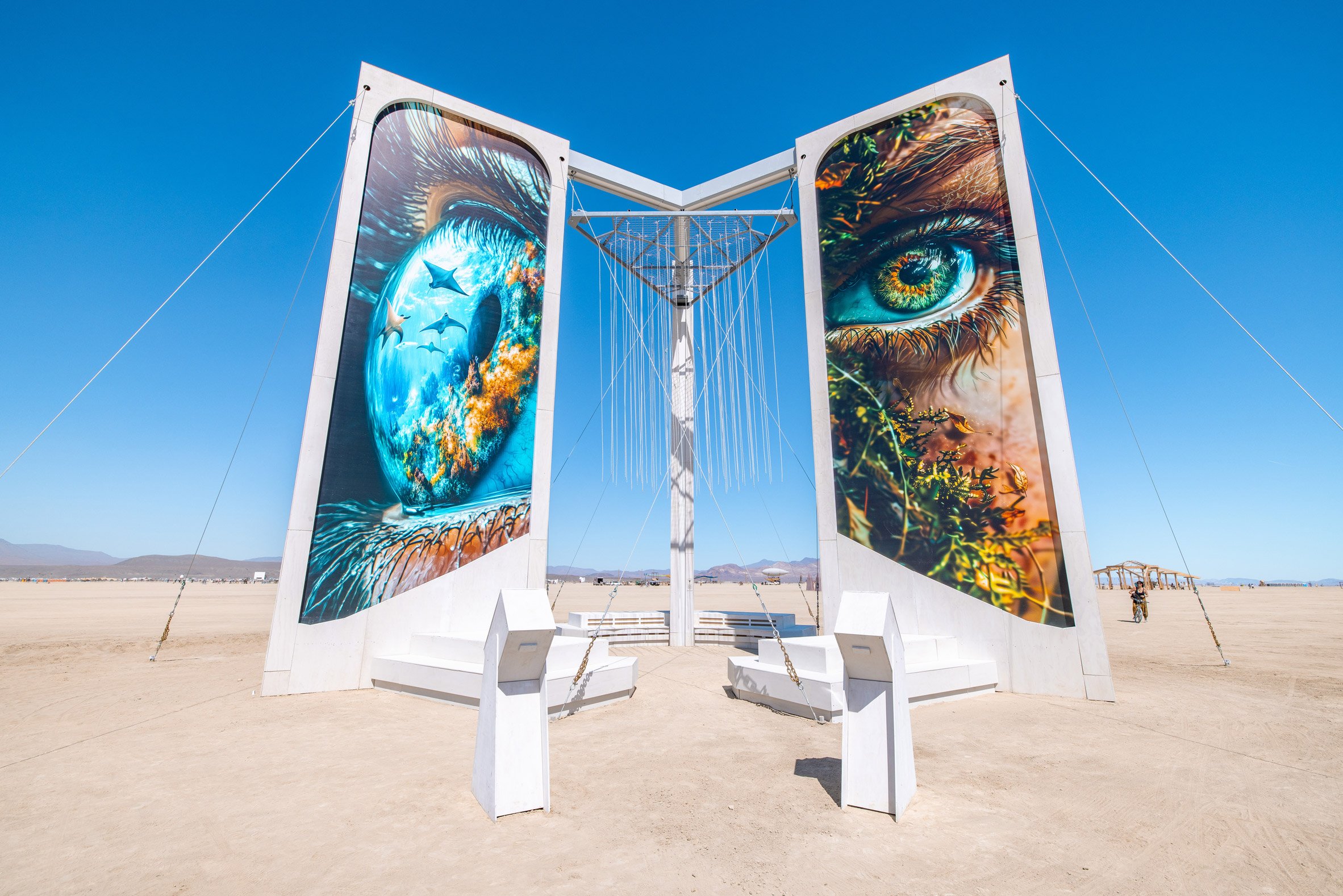
AlchemEyes by House of Fabl, Hunter Leggitt, Jonathan Berry & PhotonicBliss
This installation consisted of three 36-foot-tall (11 metres) double-sided panels equipped with graphics depicting eyes.
It was supported by a central column with suspension cables. A series of LED lights hung from the centre, resembling a "chandelier", according to the designers.
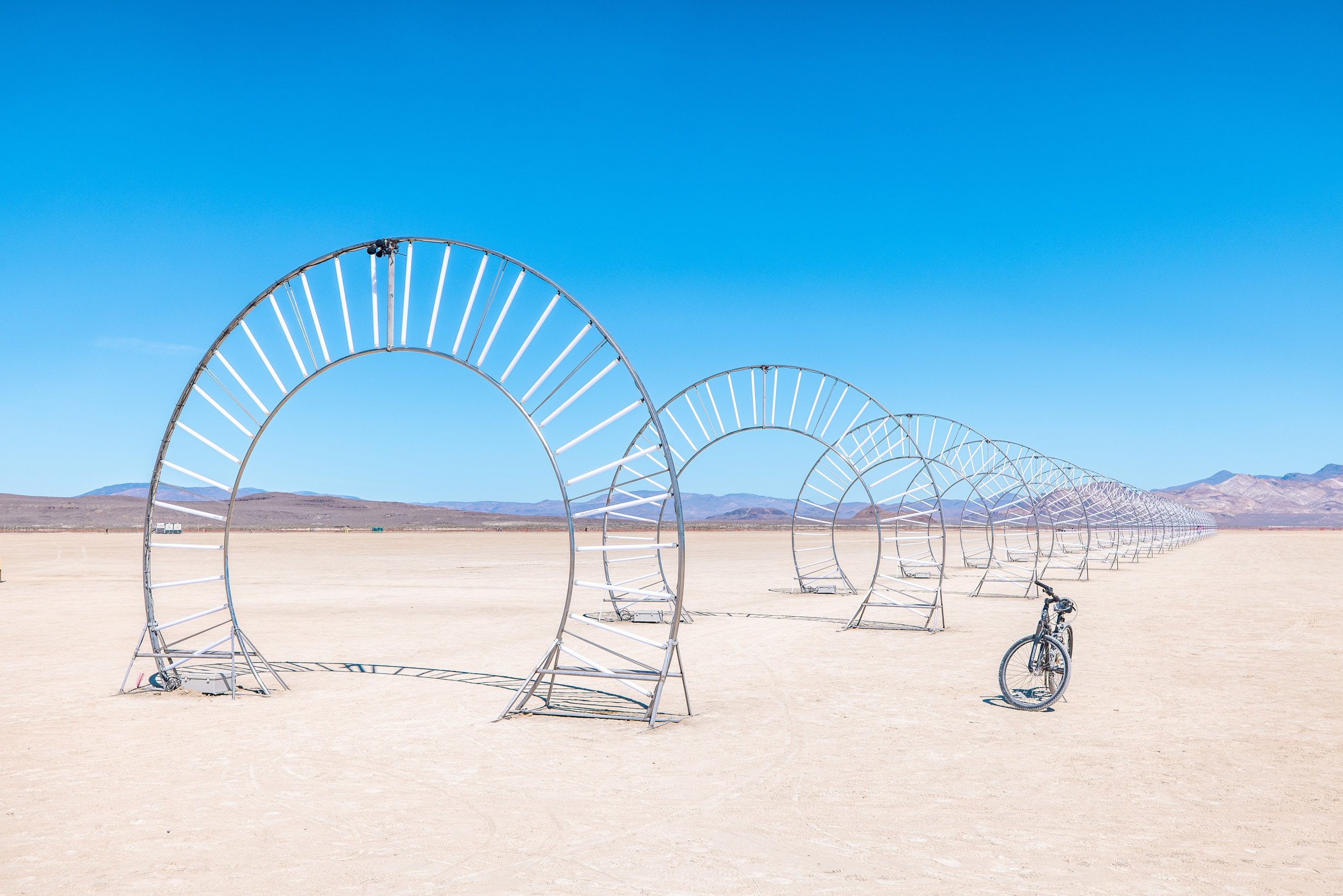
The Radial Sonic Runway by The Runway Crew
For the Radial Sonic Runway, the team created 25 "gateways" that stretched into the horizon, meant to be walked or biked through.
LEDs were placed around the circular metal structures and were programmed to correspond to sound being picked up from people and machines around the structure.
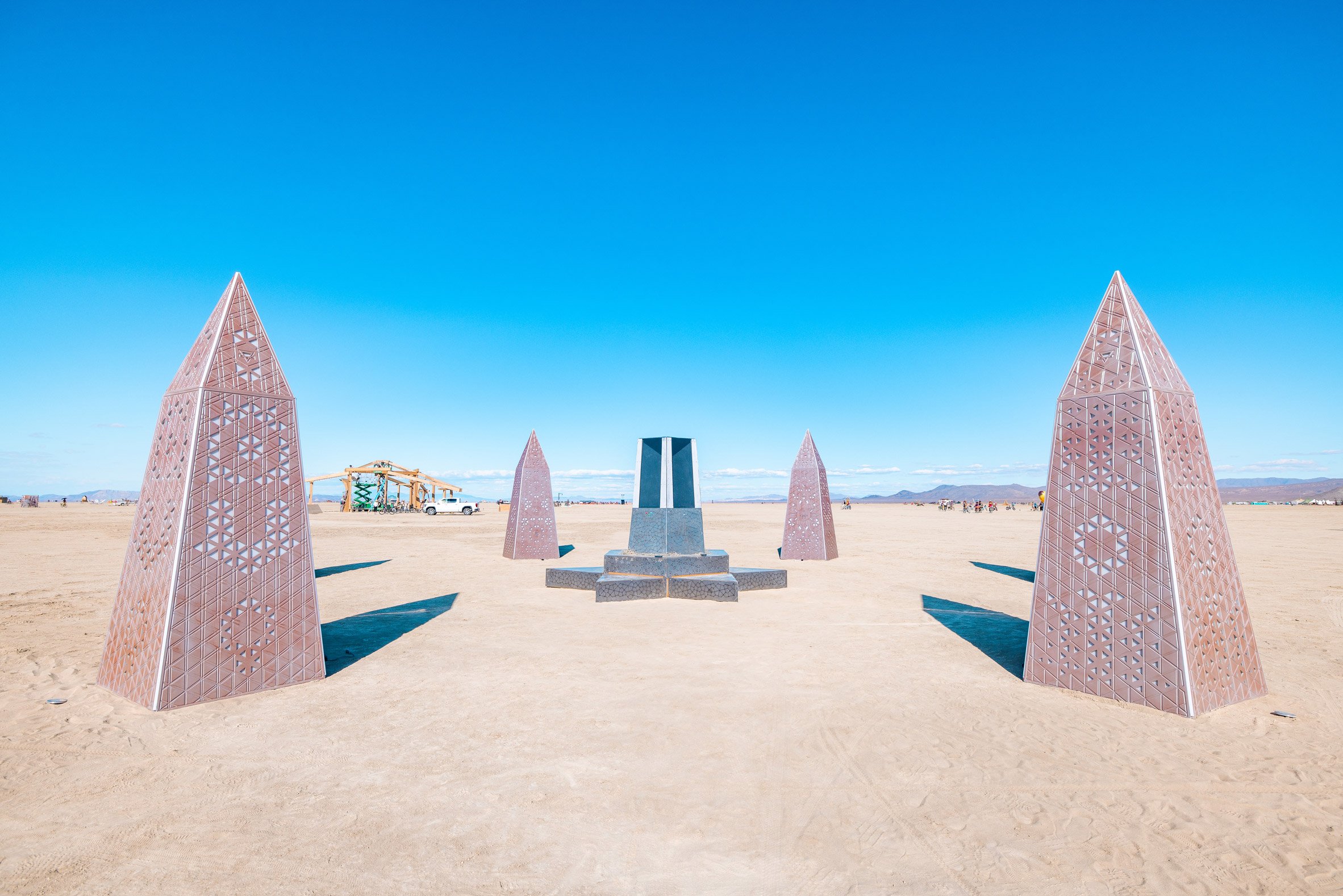
Anti-Gravitational Chamber by Intergalactic Confederation
This sculptural installation included a series of carved obelisks placed around a central structure with a star-shaped base.
According to the designers, it was created to "demonstrate that impossibility is merely a matter of perspective".
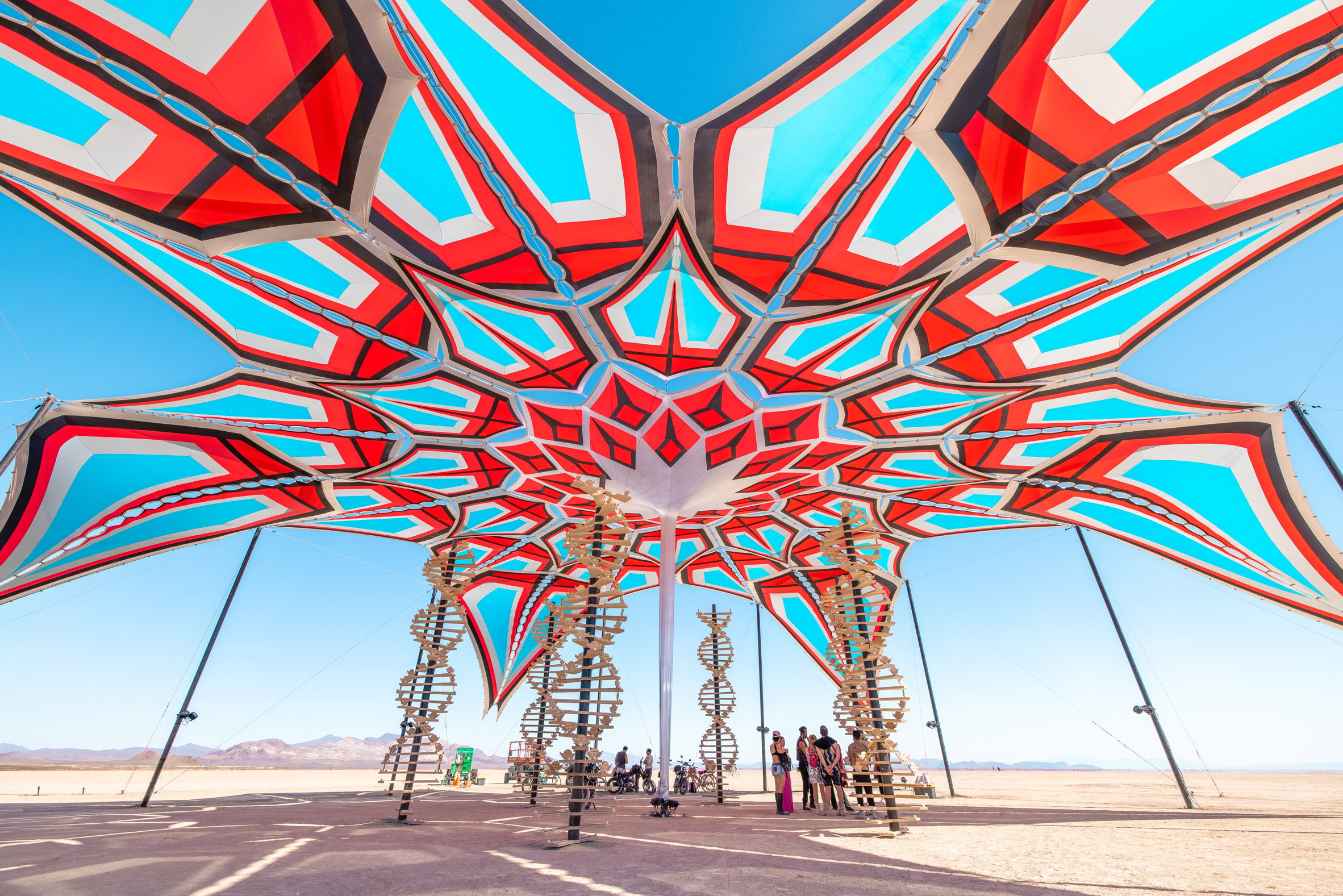
Nova Heaven by Omri Sasi and Sarel Botavia
This massive, colourful canopy was designed as a tribute to those killed during the Super Nova Festival and two other music events on 7 October 2023 in Israel.
The geometric canopy is a replica of the shade structure that was central to that event.
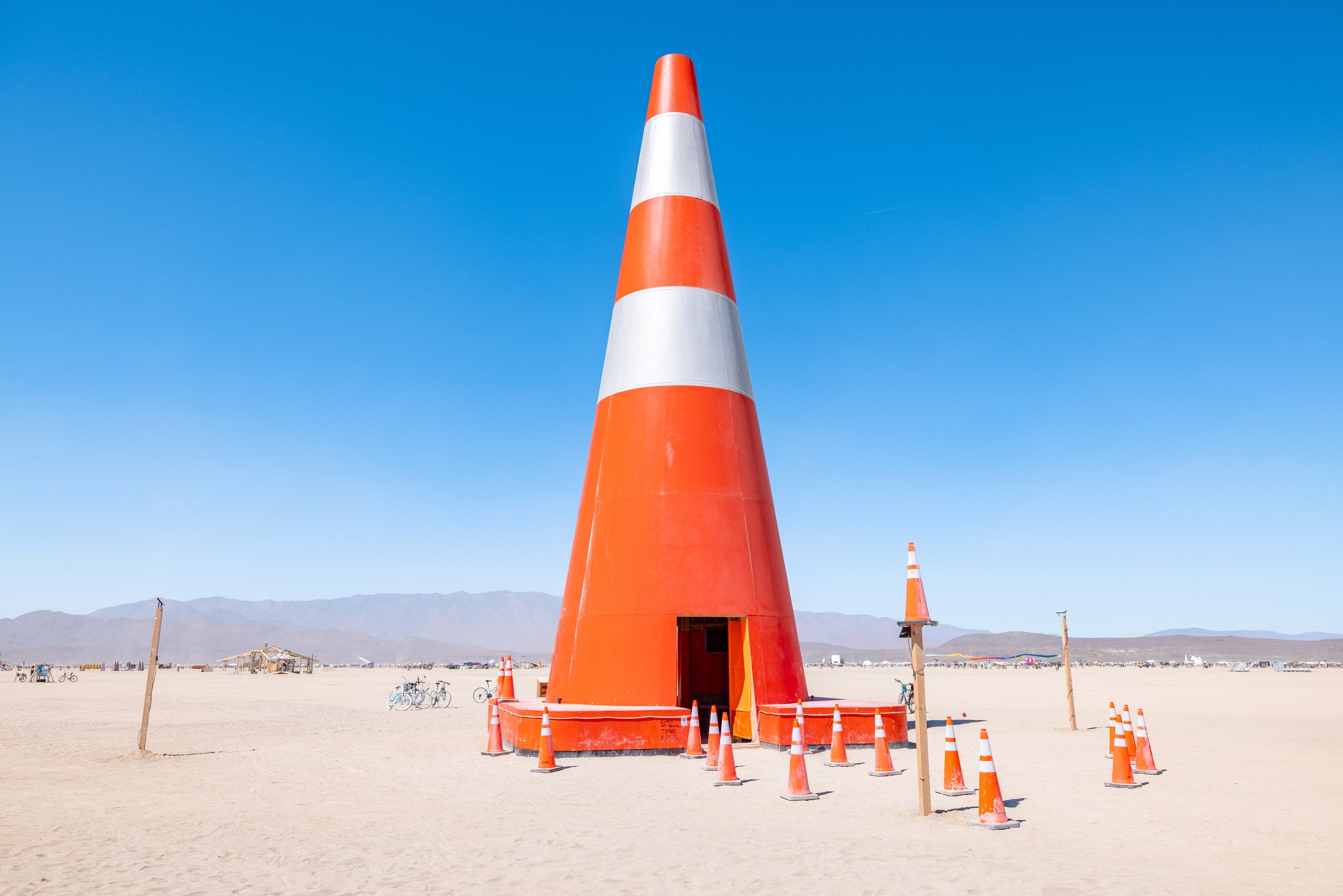
Coney McConeface: The Life and Death of a Traffic Cone by Chris "Kiwi" Hankins, ConeCophony Collective
This installation was a 60-foot-tall (18-metre) replica of the classic traffic cone. The team said it was a "homage to the unsung hero" used as a safety measure in cities.
According to its designers, the cone was placed on top of a crack in the desert that spews steam because of geothermic activity.
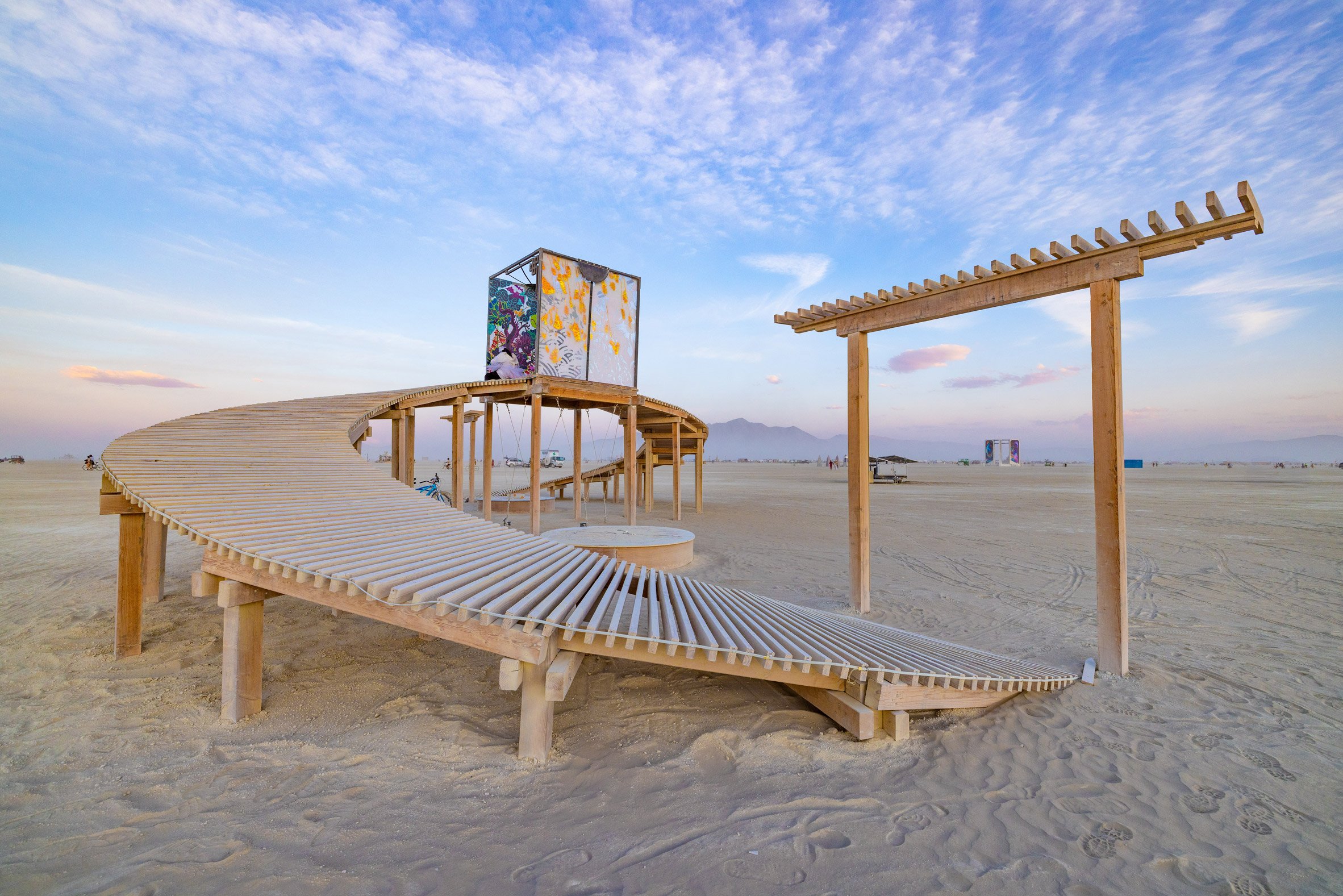
(Middle Path) Bridge (Between Heaven and Earth) by See See Kwan and the Dream Team
This wooden bridge was built with a platform in the middle that supports a central metal box.
Its design was based on a number of symbols, including the Yin and Yang symbol from Chinese Daoism.
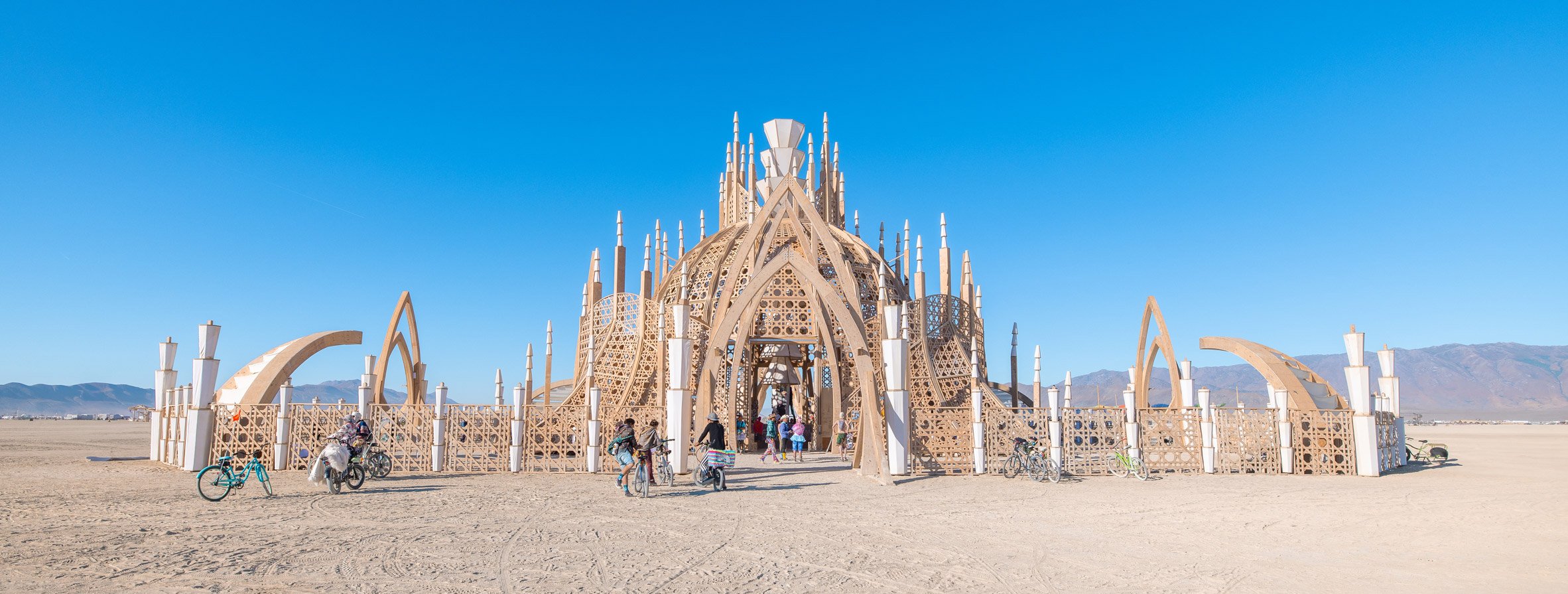
Temple of Together by Caroline Ghosn
The design chosen for this year's Temple combines elements of church architecture and Lebanese weaving techniques in a complex wooden form.
California-based artist Caroline Ghosn collaborated with architect Maissa Sader of Kamai Studio to design a structure that features a series of chambers with a central, lit column that extends skywards.
Find out more about the Temple of Togetherness here ›
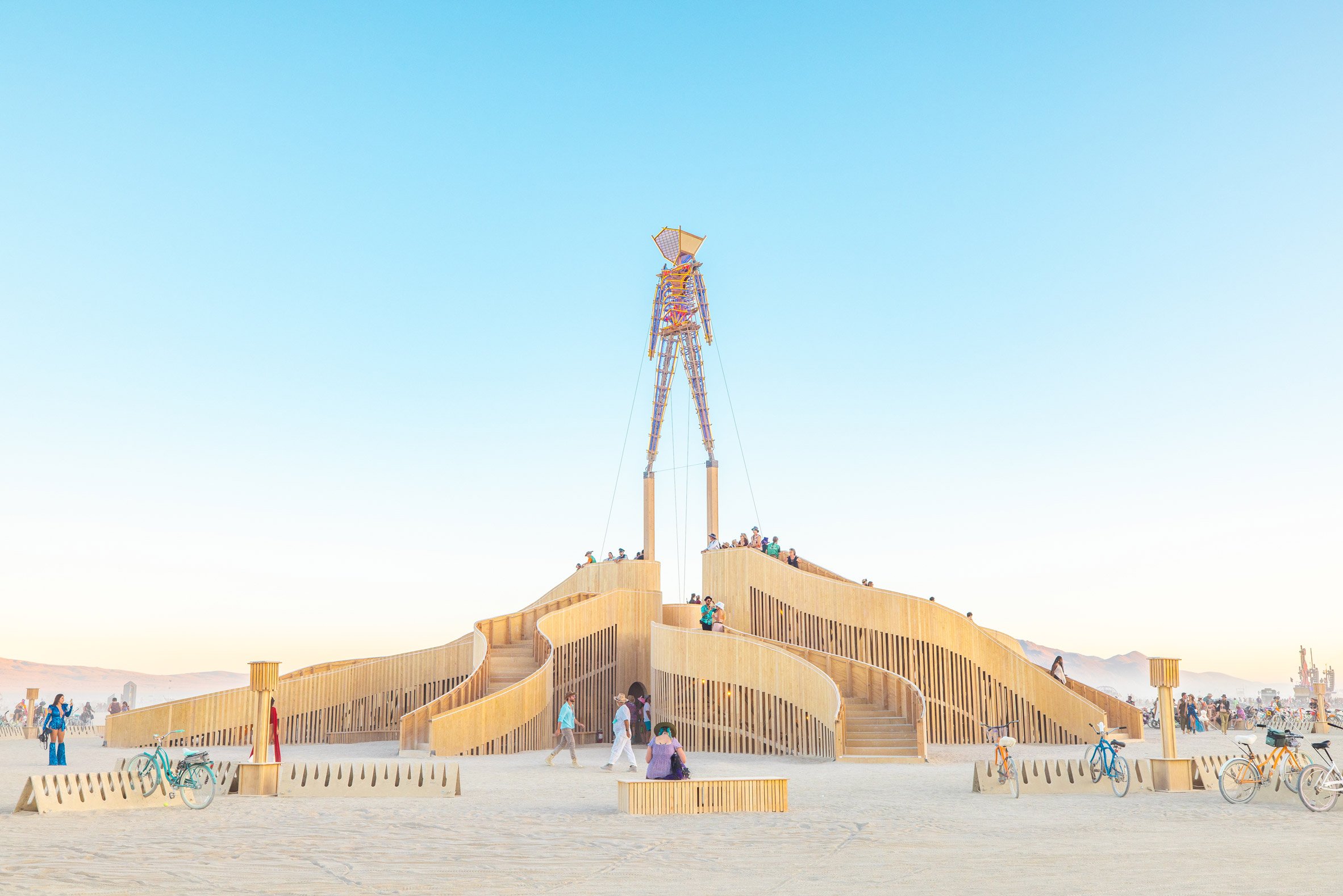
The Other by Jen Lewin
This year's design for the base of the effigy was designed as a series of elevated pathways made from wood.
"For those inclined towards gathering, the design also utilizes negative space – the center, beneath the structure, remains open for congregation, featuring interconnected benches and seating," said Lewin.
"This aspect underscores the interplay between interior and exterior spaces. It's about form, but equally about the spaces in between."
Burning Man took place from 25 August to 2 September in Black Rock City, Nevada. See Dezeen Events Guide for an up-to-date list of architecture and design events taking place around the world.